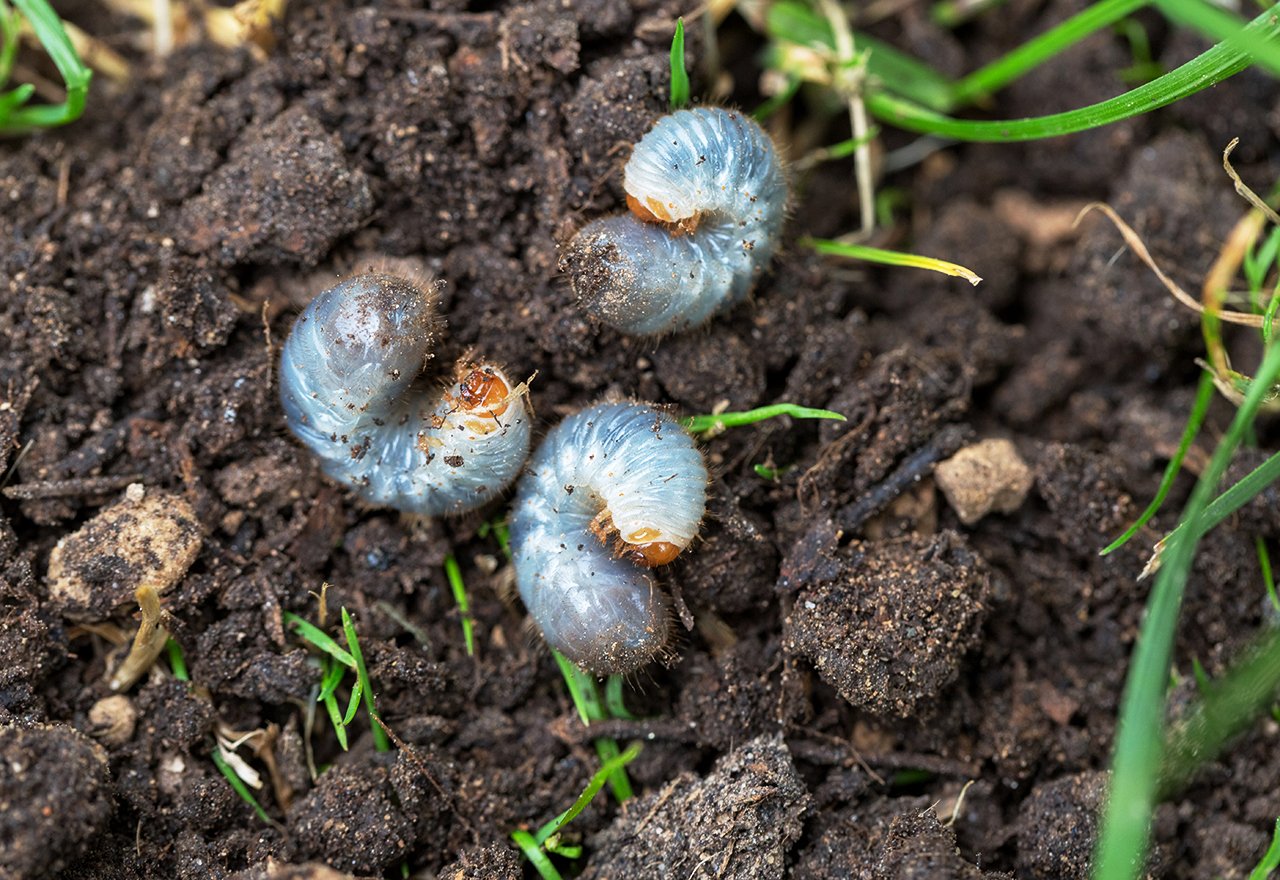Grubs, Beetle Larvae, Voraciously Chew Off the Lawns Roots and Kill it

Grubs are the larval stage of a beetle. Japanese Beetles are the most recognizable but not the most damaging grubs. Masked Chafer, and European Chafer Grubs also cause damage. Grubs start off as eggs in your soil in the late Summer. The eggs are more likely to survive if you water your lawn regularly or if there is a wet late Summer or early Fall. Later in the Fall grubs start to feed voraciously and will actually chew off the roots and kill the lawn. As the temperatures cool, grubs go down further in the soil and spend the Winter hibernating a foot or so below ground. When the soil begins to warm in the Spring, the grubs resurface and eventually turn into beetles. The beetles spend the Summer eating your plants, and laying eggs. The beetles eventually die, but they leave behind a lot of eggs that start the same cycle again next year.
All lawns have some grubs. In fact, a good healthy lawn can withstand up to 6 grubs per square foot. That means if your lawn is averaged sized, roughly 5000 square feet, it can withstand 30,000 grubs without showing much damage! If your grass doesn’t have a healthy root system, it can’t withstand that many. Your lawn will be more prone for grub damage if:
The trick for minimizing grub damage is to plant tough grass varieties and do everything you can to help them build a good root system. Using Beneficial Nematodes Natural Grub Killer in the Fall can kill up to 65% of your grubs, which is more than enough to keep them from doing damage.
Sometimes the real damage is actually done by skunks or raccoons who are peeling up the lawn in search of grubs. You can prevent them with Nature's Defense Organic Animal Repellant and Repels All Natural Animal Repellent.
If your lawn has been damaged by grubs, the best thing to do is to replace the “divots” or torn up pieces of grass as quickly as possible and start watering them as much as possible. This should help the grass get re rooted, similar to planting sod. If that doesn’t work, the lawn may need to be reseeded. Although that sounds like a pain, the bright side is that you’ll be able to start with better grasses that will make your life easier. Contact us for more information or a free quote on Lawn Renovation.
